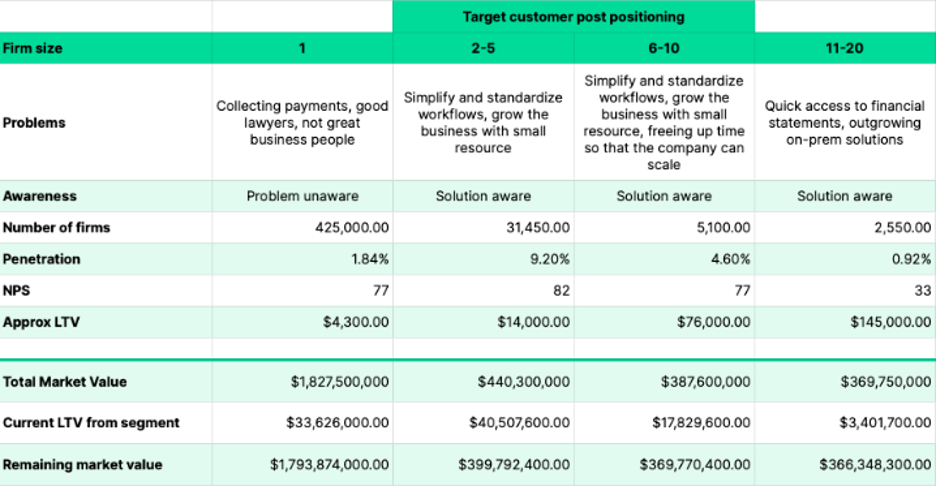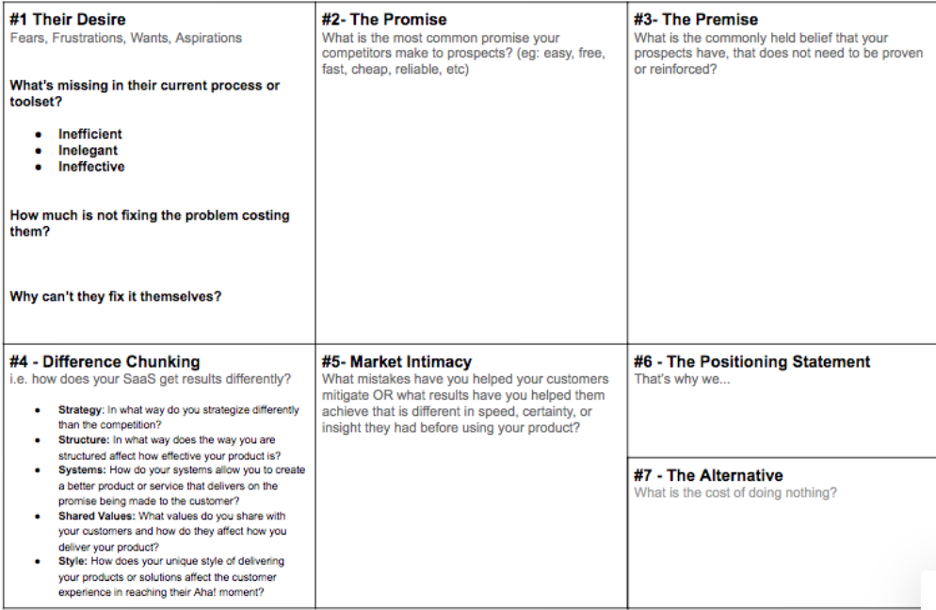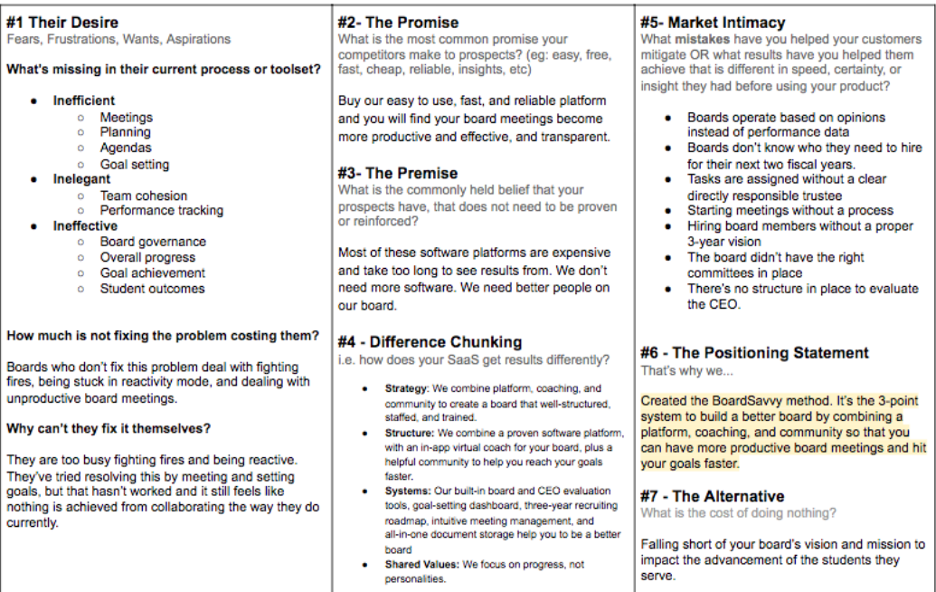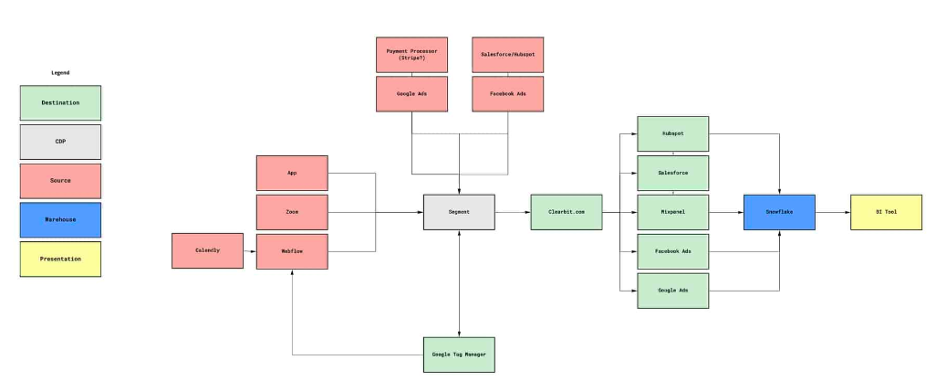How Demand Generation Boosts Customer Acquisition and Profitability for B2B SaaS
Last updated: June 7th, 2023
Many SaaS companies invest heavily in marketing, but often, marketing teams don’t feel confident in the data that they’re getting from their marketing systems and struggle to tie revenue to their investments.
This makes it hard to make the argument for increased investment which has a knock on effect on growth.
If you can’t prove your marketing campaigns are producing revenue, it’s difficult to earn buy-in from C-suite executives to continue investing in your marketing strategy.
Fortunately, there’s a solution to these problems – demand generation.
Demand generation is an often misunderstood topic, so this post provides some clarity on the topic and discusses the following:
- Why competition isn’t the only factor making customer acquisition costs unsustainable.
- Why lead attribution is an inaccurate measure of marketing success.
- How demand generation solves the problem of acquiring customers more profitably.
- How we define demand generation differently from other agencies.
- The four step process we use to run demand generation campaigns.
To learn more about how we can help boost your custom acquisition and profitability with our demand generation strategy for B2B SaaS, claim your free marketing assessment today.
Competition Isn’t The Only Reason Your Customer Acquisition Costs Are High
A few years ago, you could throw together a Google Ads campaign and earn high-value customers for cheap clicks.
Those golden days are over now, and the most common complaint we hear today is, “We’re producing some demos, but the channels just aren’t performing as well as we hoped, and it’s becoming less profitable to acquire customers.”
This is particularly true for companies selling enterprise products with long customer journeys that require many touchpoints with the brand before getting on a demo.
While it’s easy to blame rising costs on increased competition, many marketers unknowingly waste their budget by using lead metrics from platform data to guide their strategy.
Tracking leads may seem like the best guide to steer your marketing strategy, but it lacks the insights you need to compete in today’s fierce competition.
Several years ago, there were larger margins for error, so lead metrics were a sufficient guide for your marketing strategy, but today, it leaves too much money on the table.
Why Lead Attribution From Platform Data Is Insufficient For Measuring Marketing Success
There are a few reasons why lead metrics from platform data drive up your customer acquisition costs.
First, leads aren’t always an accurate representation of revenue generated.
This is because plenty of variables play into the value of a lead, like the pricing tier the lead selects, the customer support time they require, and how long they remain a customer.
In addition, those variables only apply to the leads that close. Plenty of leads won’t close and cost the company money (i.e., the sales team’s time).
The second main problem with only tracking leads using platform data is that it doesn’t account for the entire customer journey and the supporting marketing channels that led the buyer to the final touchpoint before the sale.
For example, that customer may have read several blog posts that were critical to earning their trust before they saw a retargeting ad and ultimately converted.
Giving all of the credit to the retargeting ad doesn’t accurately demonstrate the value of the touchpoints with the blog posts that occurred before the conversion. Without reading those blog posts, the lead might not have converted when they saw the LinkedIn ad.
This is particularly true for enterprise products with prospect journeys that last several months or years.
Unfortunately, platform analytics don’t show you the full customer journey, so you have to build out your own infrastructure to track this data.
Why Demand Generation Is The Solution To Acquiring Customers More Profitably
To profitably acquire customers, you need visibility into the entire customer journey to understand which marketing channels are critical to conversions, identify where customers are dropping off, and leverage revenue data to optimize for profitability – not just more leads.
This is where demand generation comes in.
When we run a demand generation engagement, we build a proprietary infrastructure (a combination of CRM and platform data) that provides insight into the entire customer journey and accurately attributes revenue to each campaign in your marketing strategy.
The data captured in this system allows you to create leverage out of insights that nobody else in the market has access to, which in turn allows you to acquire customers more profitably.
These insights are the competitive advantage you need to continue to profitably acquire customers even as competition increases among marketing platforms.
How We Approach Demand Generation Differently From Other Agencies
Our demand generation strategy is unlike any of our competitors’ approaches. Our key differentiator lies in building a robust data capture infrastructure and using those insights to build a holistic marketing strategy.
Let’s break this down.
We established that leads aren’t always an accurate representation of revenue.
Recognizing this, some agencies offering demand generation go to the other extreme and believe that because many touch points occur in private conversations on platforms like LinkedIn and Slack, it’s not worth using any tracking tools (Salesforce, Hubspot, Google Analytics, etc.).
Instead, they use customer surveys as a single source of truth.
The problem with self-reported attribution is that it typically gives all the credit to a single channel and ignores the rest of the customer journey, making it challenging to understand where other critical touchpoints in the customer journey occurred.
In fact, you don’t have any visibility into the customer journey other than the self-reported first touchpoint.
This makes it nearly impossible to properly optimize various campaigns and appropriately allocate marketing budget to the most impactful marketing channels.
In addition, self-attribution isn’t always accurate, as many people may not even remember the first time they heard about your company.
So we take a different approach to demand generation.
Instead of tracking only leads or using self-attribution, we build an infrastructure that leverages a combination of CRM and platform data to track the entire holistic customer journey.
This data gives us the insights we need to better optimize each step of the marketing funnel and accurately tie revenue outcomes to each marketing campaign.
As we take a holistic approach to each marketing strategy, we use these insights to audit and improve every aspect of your marketing funnel.
So we ensure you have a strong foundation (identifying customer pain points, crafting your messaging, etc.) and then optimize each step of the funnel to create a seamless journey that answers customer objections and efficiently moves prospects from problem aware to paying customer.
The Process We Use To Run a Demand Generation Campaign
Over several years, we’ve built a proven demand generation process with playbooks for each step. Here’s an overview of that strategy and what a standard demand generation engagement with Powered By Search looks like.
Create a guiding strategy that accounts for your market and their pain points
Step 1: Calculate TAM
Before starting any marketing strategy, you must know who you’re marketing to.
So each demand generation engagement starts by drawing a circle around the people who could potentially buy from you and calculating how much revenue that entire cohort of customers would be worth if they were to pay you. This is your Total Addressable Market.
To calculate your Total Addressable Market, you need to answer the following questions:
- How many buyers exist in your market?
- How much do they spend on your category?
- What % of that spend is on solutions like yours?
- Finally, how much of that spend can you capture?
Note that we aren’t calculating the total global market for your category – only those with a line on their P&L dedicated to solving the problem that your solution solves.
We focus on this segment of prospects because they cost less to convert as they’re already convinced they need a solution like yours. Now, all we have to do is convince them your solution is better than the competition.
Step 2: Identify an underserved segment
Larger companies serving a broader customer base can’t provide a personalized solution to each customer.
This is where your competitive opportunity lies. If you can provide the best solution for a specific customer segment, you can increase your market capture rate.
To illustrate this concept, we worked with a top legal case management SaaS that served multiple industry use cases and a broad range of customers, from single lawyer firms to enterprise-sized firms.
They wanted to capture as many customers as possible and therefore had one-size-fits-all messaging to avoid turning off any customers that could use the product.
Unfortunately, this approach negatively impacted conversions because it made the product very generic and didn’t communicate how it solved any particular customer’s pain points.
We helped them zero in on one specific customer segment and then adjusted their messaging to target only those prospects.
To select one customer segment, we identified the customer groups with the highest net promoter scores (NPS) and largest opportunities for growth in terms of TAM.
From there, we used the following data to zero in on a specific ideal customer profile (ICP):

We ultimately chose to target firms with 2-10 lawyers. While the single person firm group has more revenue available, the LTV of that group is too low to acquire customers profitably.
You can read more about the metrics we use to identify the best customer segment in our positioning case study.
After selecting 2-10 person law firms as our target customer segment and directing the positioning and messaging to those buyers, this SaaS emerged as the clear market leader for 2-10 person law firms.
An added benefit of offering the best solution for that market segment is that your customers will tell their friends about it, which increases positive word-of-mouth branding.
This makes your marketing dollars go further because acquiring one customer that then refers two other customers to your brand cuts your average customer acquisition cost by about 67%.
Step 3: Define a common pain point your underserved segment already has a P&L line dedicated to solving.
It’s much easier to persuade users to buy your solution if they have a pain point your solution solves better than any other competitor and an existing budget dedicated to solving that pain point.
As a result, prospects will close faster, which allows you to acquire customers more profitably.
To illustrate this, consider an global enterprise that’s looking for a new accounting solution.
The organization could use any generic accounting software like QuickBooks, but global companies also have nuanced pain points that a regional company does not. For example, they might want an easy method to account for global currency fluctuations.
If the organization currently has a budget dedicated to accounting software, but their current solution is a generic accounting software without basic accounting features, it would be easy for a global-specific accounting company to close this prospect.
Step 4: Build a list of buyers and accounts
Most companies use generic buyer personas to create targeting lists for their marketing campaigns.
An example of a generic buyer persona might be “Head of Marketing at a SaaS company with $50M to $100M in ARR.”
From there, companies rely on the platform (i.e., LinkedIn) to accurately identify the right people to show ads to based on your buyer persona data. Unfortunately, platforms aren’t perfect at ensuring each person that sees your ad is within your ideal customer profile, so you’ll probably waste some marketing spend targeting irrelevant prospects.
To solve this problem and ensure each marketing dollar is spent on a prospect in your ICP, we create specific lists of buyers and accounts by using databases like Crunchbase or ZoomInfo.
However, the data from these sources isn’t always 100% accurate, so we also clean the data using AI. You can learn more about how we’re incorporating AI to improve targeting and our general marketing practices in our post on the subject.
Step 5: Develop positioning, messaging, and narrative
The key to dominating a particular market segment is to deliver a differentiated solution specifically tailored to solve that segment’s unique pain points.
Therefore, the positioning, messaging, and narrative used across all of your marketing campaigns must clearly communicate how your solution is different from the rest of the market.
Any inconsistencies in the narrative across each touchpoint in the customer journey create friction, hurting your conversion rates.
To develop a positioning statement, we run an exercise called the SaaS Positioning Canvas.
This document gathers data from leaders to define the positioning, messaging, and narrative:

We recently ran this exercise for BoardOnTrack, a school board management platform for charter schools, and you can see the completed version of the SaaS Positioning Canvas for them below:

This document is also helpful for achieving team alignment on the messaging and positioning of your brand. While you may think that everyone knows the company’s positioning statement, it’s easy for team members to interpret it slightly differently, which can send mixed signals to customers and cost your brand a conversion.
Step 6: Outline the sales and marketing funnel
During this step, we outline the marketing channels to incorporate into your funnel.
While many marketing agencies select a variety of bottom-of-the-funnel channels to target based on the services they offer and what’s worked for past clients, we select channels based on how the customer already navigates the funnel.
The buyer is in control of their journey, and if you don’t use the channels of their choice, they’ll simply leave and find a competitor using their preferred channels.
So as we collect more data on the customer journey and learn how prospects typically move from general awareness to paying customers, we adapt the marketing funnel to meet them.
The second aspect of this step is deciding on the go-to-market motions (self-serve, inside sales, etc.).
Many people choose a price point that doesn’t cover the overhead of their go-to-market motion.
For example, if you’re paying an inside sales team, you have to charge more than if you’re using a self-serve go-to-market motion.
So during our engagement, we use proprietary metrics captured by the demand generation engine, like payback period and CAC to LTV ratios, to consult with companies to ensure their go-to-market motion is scalable and profitable.
Building an Infrastructure To Track The Holistic Customer Journey and Accurately Attribute Revenue To Marketing Campaigns
We already discussed the problems with relying on basic lead attribution from platform data, so building an infrastructure is critical to our demand generation strategy.
This infrastructure can range from a relatively simple Hubspot setup with platform data integrations to managing customer data platforms, data warehouses, multiple CRMs, and business intelligence tools.
Here’s an example of one infrastructure we built for a client:

While the exact infrastructure may vary from client to client, here are the five main components generally included in each infrastructure we build:
- CRM – Hubspot, Salesforce, Pipedrive
- Landing Page/Website Platform – Hubspot, Webflow, WordPress
- Website, Product, Sales Analytics – Mixpanel, Amplitude
- Data Pipeline – Zapier, CDP, Google Tag Manager
- Data Visualisation – Hubspot, GA4, Looker Studio, Tableau
Once you have that setup, then you need to ensure you have:
- Documented, agreed upon & adhered to lifecycle stages
- Documented, agreed upon & adhered to pipeline stages
- A lifecycle marketing/nurturing process
- A sales process
- segmented lead-to-revenue reporting
With this infrastructure in place, we’ll use that data to inform and improve the rest of your marketing strategy.
Developing a bottom of the funnel strategy to lead prospects to the point of sale
Bottom of the funnel prospects are entering the final stage of the buyer’s journey. At this point, they know that solutions to their problems exist, have decided to purchase one, and are likely considering three to six different options.
We build out a bottom of the funnel strategy to inject our client’s brand into the conversation and educate prospects on the unique value of the client’s solution and how it’s differentiated from the competition.
From a tactical standpoint, we begin by engaging their interest with solution aware content like calculators, product choice guides, buying guides, scorecards, and industry reports, as well as product aware content, like case studies, use case pages, comparison pages, and ROI calculators.
Most prospects find this content through organic search.
Organic search is one of our preferred mediums, as someone actively searching for this style of content has already qualified themselves as a bottom of the funnel prospect and is ready to make a purchase decision.
Once we’ve captured the prospect’s attention with our content, we’ll include a CTA to the next step in the funnel.
However, we don’t just randomly select any CTA (i.e., join a demo!).
If you ask customers to take the next step in the buyer journey, but they still have unanswered questions or objections, they’ll simply leave and find the information they need from a competitor.
As it rarely makes sense to answer every single customer objection or question in a single piece of content (especially for complex products with long buying cycles), we identify the additional information that prospects need to take the next step in the customer journey (using data from the infrastructure we built) and then direct them to that resource in the CTA.
For example, if you sell project management software and the prospect reads a buyer’s guide to selecting project management software, they might still have concerns about your product in particular. Does it work for teams their size? Does it work for their industry?
To answer these objections, you can direct them to a case study of your product serving that customer segment.
It’s also worth noting that when most companies come to us, they find themselves paying more than a customer is worth to acquire them.
While this is fine for initial experimentation, we work with clients to optimize their bottom of the funnel strategy to acquire customers profitably.
Building out a larger demand generation strategy is a major part of how we’re able to better optimize the bottom of the funnel strategy as it gives us the insights to improve each campaign’s targeting and effectively allocate budget to the right campaigns based on their revenue contributions.
Creating high-value touch points with an upper funnel program
If you’re looking at several CRMs, HubSpot and Salesforce likely come to mind and immediately have an advantage over other lesser-known brands because their brand awareness built credibility and trust with the audience before they ever started researching CRMs.
So to give you that same competitive advantage, we create an upper funnel program to increase brand awareness among your target market – even if they’re not ready to buy.
Here are just a few tactical ways we create an upper funnel program.
Content Creation
We have a playbook on B2B SaaS content creation, and instead of targeting generic keywords with high volume and low difficulty, we create content around key customer pain points.
So even if a person isn’t actively looking to purchase a solution, you can still solve their pain points by providing content that gives them the guidance necessary to address the problem at hand.
Our own marketing at Powered By Search is an excellent example of content creation as we actively publish pain point content for B2B SaaS marketers.
Many of our readers aren’t actively looking to hire a SaaS content marketing agency, but they find our content after searching for various pain points regarding B2B SaaS marketing. Then, when they decide to hire an agency, they know we exist, and many come back and become customers.
Paid Social Matched Audiences
Paid social media campaigns are an easy way to reach your ideal target audience and increase brand awareness.
To run ads, we go back to step four in the guiding strategy process and use that list of buyers and accounts to ensure ads are only seen by qualified prospects rather than hoping the platforms show the ads to our ICP.
Once we have their attention, we capture the lead by offering a lead magnet or other valuable content in exchange for an email address to remarket to them and keep them in the buyer journey.
Start Incorporating Demand Generation Into Your Marketing Process
Demand generation gives you visibility into the full customer journey and allows you to tie revenue to each marketing effort.
As marketing channels become increasingly competitive, these insights are critical to optimizing your marketing strategy and efficiently allocating marketing budget.
Only a handful of marketing agencies offer holistic and full-funnel demand generation engagements, and Powered By Search is unique for a few reasons.
First, we have documented, proven playbooks for each step of the demand generation process, so we aren’t wasting your marketing budget experimenting with brand new concepts.
In addition, our team is a group of highly specialized experts in their respective fields. For example, you’ll have some of the best paid media, SEO, and content marketing specialists in the world working on your team.
This combination of highly specialized experts with a track record of producing excellent results with our proven playbooks is a key reason why Powered By Search is able to deliver outstanding client results.
To see for yourself how you can begin incorporating demand generation into your marketing strategy, claim your free SaaS Scale Session today.
What you should do now
Whenever you’re ready…here are 4 ways we can help you grow your B2B software or technology business:
- Claim your Free Marketing Plan. If you’d like to work with us to turn your website into your best demo and trial acquisition platform, claim your FREE Marketing Plan. One of our growth experts will understand your current demand generation situation, and then suggest practical digital marketing strategies to hit your pipeline targets with certainty and predictability.
- If you’d like to learn the exact demand strategies we use for free, go to our blog or visit our resources section, where you can download guides, calculators, and templates we use for our most successful clients.
- If you’d like to work with other experts on our team or learn why we have off the charts team member satisfaction score, then see our Careers page.
- If you know another marketer who’d enjoy reading this page, share it with them via email, Linkedin, Twitter, or Facebook.